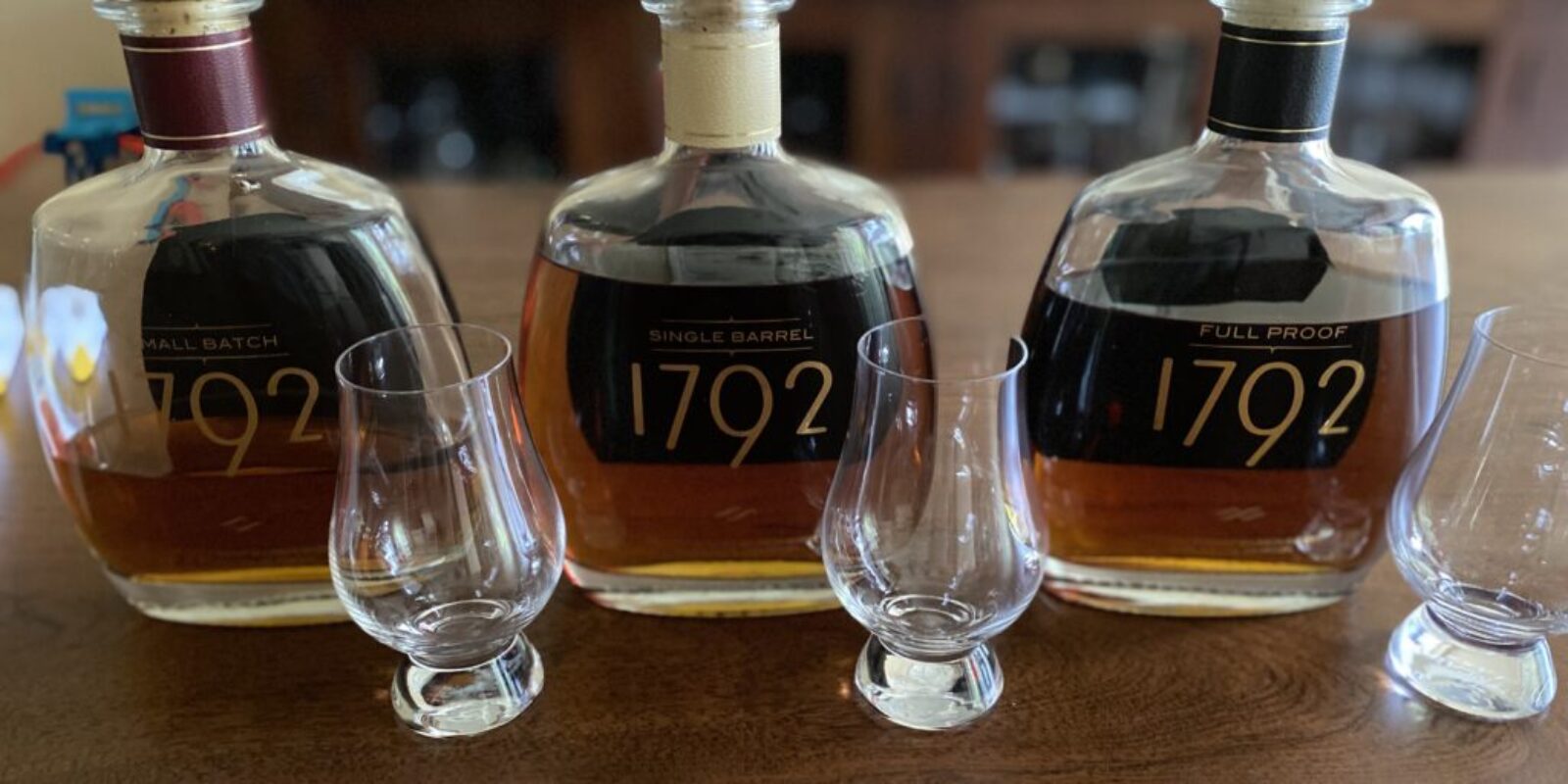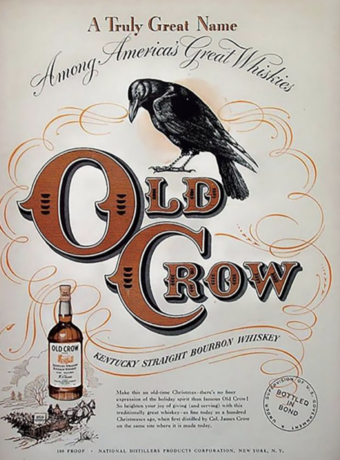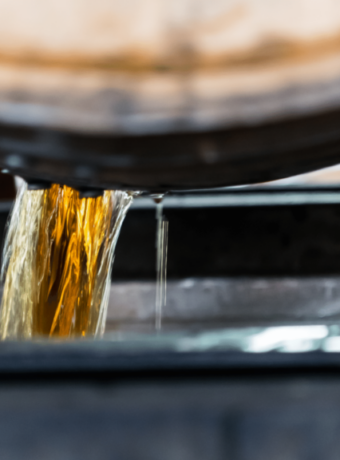Let’s start with something plain and simple right up front, if you like the way something tastes and smells, that is what’s important. Enjoy your drinks however you like and the way that you enjoy the taste, smell, and drink the best. What tastes and smells good to one person can be different to another, and the specific flavors and scents you smell, can be different than another , everyone is different. It can be great to find someone that has a very similar sense of taste and smell to yourself, but someone’s difference of opinion and experience doesn’t mean you are wrong. Keep this all in mind when you read reviews, tasting notes, and share with other people, you won’t always agree and that’s fine, but with an open mind you can learn from differences of opinion and that can be a valuable part of your journey.
Your ability to taste, otherwise known as your palate, and your sense and ability to detect and recognize smells is different than other’s and can change over time and with experience. Some people have a sensitive palate that allows them to taste a wide range of flavors with subtle differences, while others may only be able to recognize the most prominent flavors and smells. Whatever your palate is, enjoy it for what it is! If you want to be able to taste more flavors and smell more scents you can certainly work to improve your ability. Besides the practice is the fun part!
If you have a basic palate and sense of smell it is likely that you can readily smell and taste the most prominent and typical characteristics of bourbon; oak, vanilla, caramel, pepper or spice, mint, fruit, nuttiness, flowers, cinnamon, general baking spices, brown sugar or a general sweetness.
People with a more developed or experienced palate may be able to taste and smell much more specific characteristics such as walnut, almond, maple syrup, dark chocolate, black pepper, white pepper, tobacco leaves, spearmint, apple, cherry, blackberry, roses, and on and on.
Oftentimes it is a combination of scents and smells that people experience such as the combination of baking spices, ingredients and the complete thing itself such as warm apple pie, creme brulee. The smells and tastes that you can experience are endless and are influenced greatly by the foods, drinks, environment and surroundings that are a part of your past and present life.
Maybe you think that is all pretentious bullshit! We like to think that everyone has their own experiences and abilities to offer and we prefer to keep an open mind to that. Take the opportunity that is in the difference of opinion and see if you can try to taste and smell those things, maybe you will actually find yourself able to and you will have learned and experienced something new.
First of all, to do any smelling and tasting you have to get the bourbon in a glass and do the act of smelling, drinking, and tasting. Of course, there are many different ways to do even that. Again, to each their own, but keep an open mind and give some different things a try to expand your experiences and see what the differences are. It seems that at some point most people settle on a preferred way to have their drink and a specific way that they like best to enjoy the taste and smell of the bourbon. During our bourbon journey we have tried all the ways we have come across in an effort to have new experiences, learn something new and to be open to learn from the ways that others find valuable. Below is a collection of different aspects of tasting bourbon and what we have learned and have found useful in learning to taste more and better along the way to a greater and deeper enjoyment of bourbon.
Be aware
- Consider your day –You should be aware that your day will influence how and what you taste. What did you do today? Were you outside all day? Were you around strong smells like campfire, lawn mowing, onions or spices from cooking? All these things can have an impact on what you taste in your glass.
- How are you feeling? – Having a cold, being sick, or having allergies can also make a difference in how you smell and taste.
- Think about what you ate. The food that you ate on a given day can also make a big difference. Did you eat spicy food? Lots of garlic? What did you have to drink? All of these things can make a difference. It can be an interesting experience to try the same bourbon before and after some food with a strong taste, like curry or hot wings.
- What is going on around you. What is the environment that you are enjoying your drink in? Are you somewhere that you can focus and concentrate? Is it loud and chaotic and you’re being constantly interrupted?
Give it a chance
- Taste it more than once. While first impressions are powerful, give the bourbon a chance!
- On different occasions. Because of all the things above, you should consider tasting the bourbon more than one time, on different days and under different circumstances.
- Get your money’s worth. You spent money on that bottle, give it more than one chance before you cast your final judgment.
- As the old adage goes, the third time’s a charm, give a bottle 3 tried before you make your final decision.
Helpful tools
- Remind yourself. Flavor charts or flavor wheels can be a useful tool to help remind you of the flavors and scents that you should keep in mind and consider while you are tasting.
- Take some notes. A notebook can be very useful for writing down what you are smelling and tasting and can also serve as a good reference to come back to in the future. If you look around online you can find tasting note templates as well if you would like something to get started with.
What’s that you smell
- Your experiences shape your senses. The tastes and smells that you will find in a glass of bourbon are directly related to the things that you are most familiar with and have experienced in your life. This is the source of some people’s seemingly odd or specific taste and smell descriptions, they have had different experiences in life and that offers them different memories to associate with what they are smelling and tasting. If you bake and cook a lot, it will likely be very easy for you to smell those scents. Do you spend a lot of time outdoors?, then it may be easier for you to smell and taste wood influence, flowers, grass, fruit and herbs.
Fill your glass
- Most common. The Glencairn is the most common glass used for tasting bourbon and whiskey in general. The shape of the glass was designed specifically for smelling and tasting as the shape allows the liquid to be exposed to and interact with the air and to concentrate and direct the aromas to the rim of the glass. The Glencairn also fits nicely in your hand and is very comfortable and easy to drink from.
- Use what you have. If you have a rocks glass, or tumbler, those work just fine. Hey, if all you have is a coffee mug that works too. Grab what you have and get started!
- Experience the difference. There are many different shaped glasses, some of them do really make a difference, give them a try! It is a fun experiment to taste the same bourbon in different glasses.
Not just brown water
- What color is it? Hold your glass up to the light and have a good look.
- A color like? What is a comparable or representative color? What does it remind you of?
- More than just a color. The color is a good indication of time in the barrel, how much the barrel has influenced the bourbon, what has been extracted from the wood, and how much flavor has been picked up from the barrel.
- Seeing clearly. Look at the bourbon in your glass and see how clear it is. It is extremely clear, or a little cloudy? Can you see anything else in there? The clarity of the bourbon can indicate different types of filtration that may, or may not, have been used during bottling.
Check out those legs!
- The what? The legs are the pattern or the way that the bourbon flows back down the glass.
- Move it around. Swirl the bourbon around in the glass, tip the glass to get the bourbon up the wall of the glass.
- The Why? There are fatty acids and oils in the bourbon that will affect the legs.
- Go ahead, take a look. The legs can appear thick and slow to move down the glass, or thin and flow more quickly. The legs give an indication of how thick or thin the bourbon will feel in your mouth.
Give it a sniff (Nose)
- Watch your mouth. Try smelling the bourbon with your mouth closed and then with it open. As smell and taste are connected you will likely notice a difference in aromas you detect when smelling with your mouth open or closed.
- Take it easy. Typically take small slow sniffs. If you sniff too deep and too fast you will pick up the alcohol and will feel that burn in your nose, this can also dull your sense of smell for a while.
- Not too close. Don’t bury your nose in the glass and take a deep quick sniff, you’ll be smelling more of the alcohol than the aromas given off. Start with your nose near the edge of the glass. It can be useful to try smelling at different distances from the glass, you can often detect different aromas at different distances.
- Move around. Make a point to smell with both sides of your nose, tilt your head to get one side of your nose closer to the edge of the glass, or move the glass from side to side across your nose. You may find that you are able to smell different scents as you move the glass or your nose and get a more complete sense for how the bourbon smells.
- The nose. Smelling the bourbon is referred to as nosing and the way that a bourbon smells is referred to as its nose.
Taste, not just drink (Palate)
- Sip, not shoot. Take small sips, don’t shoot the whole glass. Generally try to get an amount in your mouth that is just enough to coat your tongue and the inside of your mouth. Smaller sips allow you to taste the bourbon better and will let you taste longer before the alcohol starts impacting your sense of taste.
- Just sip and swallow? There are a couple different methods that are most often used. Some people take a sip and just let the bourbon fall over their tongue and flow through their mouth. Other people like to move the bourbon around in their mouth like a slow light “swishing” before they swallow. Another often mentioned method is called the “Kentucky Chew”, where you take a sip and make like you are chewing the bourbon in your mouth while at the same time, but like chewing with your mouth open, moving the bourbon around your mouth and smacking your lips open and closed. The Kentucky Chew method is making sure to get some air in your mouth and get it mixed with the bourbon allowing the two to interact. In common with each of these methods is letting the bourbon coat your tongue and your whole mouth, each using a little different way to get all your taste buds exposed to the bourbon. Try them all, experience the differences for yourself, find a favorite, and even taste the same bourbon in different ways.
- Where are the tastes? Typically on the tip of your tongue is where you’ll taste the sweet notes, the middle of the tongue is where you’ll taste the savory notes and the back of the tongue is where you’ll taste the spice notes. These are the typical taste locations because of the taste buds on your tongue, different parts of the tongue are responsible for tasting different flavors. So while these are typical, it is interesting to pay attention to where in your mouth and tongue you are experiencing different flavors and even if it changes from the start of the drink through the finish.
- The palate. What you experience when tasting the bourbon and how the taste of the bourbon is described is referred to as the bourbon’s palate, or how it tastes on your palate.
Cross the finish line (Finish)
- Last, but not least. The taste doesn’t end just because you swallowed the bourbon. The finish is the taste that is left in your mouth after you swallow and it is a very important part of the tasting and enjoying of bourbon. Pay attention, how long do the flavors stick around your mouth? How strong are the flavors?, do they change? Are the flavors the same as what you tasted when the bourbon first hit your mouth? The longer the tastes stick around, the more present the taste remains and any changes in flavors all make up the finish of the bourbon.
- A lasting impression. The finish can really make an impact on your impression, the overall taste, and your overall enjoyment of the bourbon. The finish allows you to continue to taste the flavors and experience the bourbon after you swallowed the bourbon.
- How to call it. A finish is typically considered short if it is less than 10 seconds, medium for 10-25 or 30 seconds, and a long finish can be more than 30 seconds.
- The finish. The taste and flavors that are left in your mouth, for how long and any changes are all called and described as the bourbon’s finish.
The trinity of taste
- Nose, palate, finish. Each explained above, these are the terms that are typically used to describe a bourbon and you will see these terms used throughout bourbon reviews and tasting notes. If you’re taking notes while enjoying your bourbon use these terms to describe what you’re experiencing, organize your thoughts, and to help form your opinion about the quality of the bourbon and your enjoyment.
- The complete experience. Together the nose, palate and finish are the 3 key characteristics that make up the complete description of a bourbon and are the terms that are used to describe the different aspects of tasting, experiencing and enjoying bourbon.
It is important for you to know, understand, and keep in mind that all of the aspects of tasting above can have an influence on what you experience while having a glass of bourbon. If something tastes different or off, think about some of these things and consider the influence that something specific from your day or environment may have on what you’re tasting. If you are interested in having a more developed palate or being able to taste and smell more in your glass of bourbon, keep these things in mind and try new things out. Also remember that there is no wrong way! The way that you prefer and get the best enjoyment is the right way for you.



